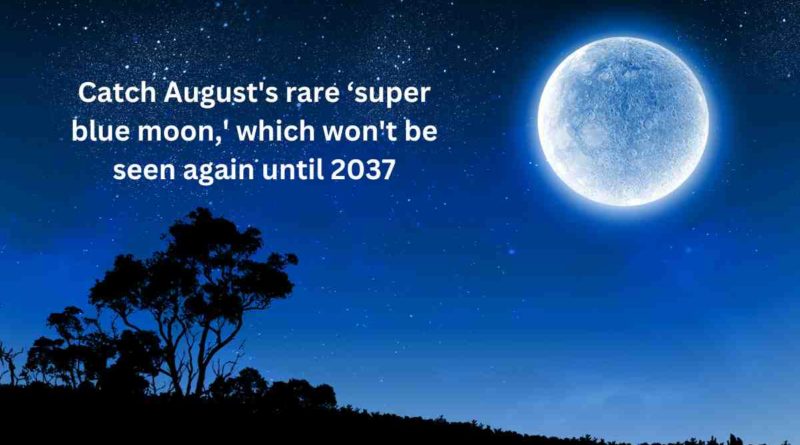Catch August’s rare ‘super blue moon,’ which won’t be seen again until 2037
Ever glanced up and been enthralled by a moon so large and brilliantly blue, it looked like a dream? That, folks, is the magic of the Super Blue Moon! This August, nature is rolling out the red carpet for such a heavenly sight. Let’s embark on this celestial journey and discover what makes it tick!
The Super Blue Moon Defined
What’s in a Name?
While the term “Super Blue Moon” might sound like something straight out of a fairy tale, there’s concrete science behind it. So, what exactly does it mean?
- Supermoon: When the moon is closest to the Earth in its orbit, making it appear larger than usual.
- Blue Moon: The second full moon in a calendar month with two full moons.
Combine the two phenomena, and voilà! You’ve got yourself a SBM!
Also, Read When is Labor Day: The American Tribute to Workers
How Rare is This Event?
Fancy this: the SBM only graces our skies once in a blue moon (pun intended)! The next time you’ll witness it will be in 2037. Better mark your calendars!
Catch August’s rare ‘SBM,’ which won’t be seen again until 2037
Our universe is packed with marvels, and the SBM is certainly one of them. This August, the moon will show off its grandeur in a way that will leave you in awe. Given its rarity, it’s a sight you won’t want to miss. Just think about it – after this, a whopping 16 years will roll by before it makes another appearance!
Diving into the Science of the Super Blue Moon
Why Does It Appear Blue?
You might be wondering, “Does the moon really turn blue?” Well, not quite! The term “blue” in this context is more of a misnomer. The moon’s hue can appear differently due to atmospheric conditions but doesn’t genuinely transform blue.
The Mechanics Behind its Size
The moon’s proximity to Earth is what makes it look grander. When it’s closest in its orbit (called perigee), it can appear up to 14% larger and 30% brighter than when it’s furthest away (apogee).
Follow Us on NewUsaNews Facebook
Witnessing the Beauty
Best Viewing Spots
You don’t need to jet off to a remote location to see this beauty. Urban dwellers, fret not! Just find a spot with minimal light pollution, perhaps a local park, and let the Super Blue Moon enchant you.
Stargazing Equipment: Yay or Nay?
While telescopes can enhance the viewing experience, your naked eye will do just fine. However, if you’re keen on capturing some stellar shots, a camera with a good zoom will be your best buddy.
Incorporating Moon Magic Into Your Life
Harnessing Its Energy
Believe it or not, many feel that the moon can influence our moods and energies, especially during unique phases. Consider moon meditation or simply spending time under its glow to soak in the positive vibes.
Snap and Share!
Why not capture the moment? Share your shots of the Super Blue Moon on social media. Trust us, it’ll make for a mesmerizing post!
Conclusion: The Enchanting Dance of the Cosmos
The universe constantly whispers mysteries, and the Super Blue Moon is such a melodious call. As August draws near, prepare to be swept off your feet by this celestial marvel. And while you’re at it, why not make it a moonlit night to remember? After all, such wonders don’t come knocking every day!
Remember to look up, embrace the beauty, and cherish the moment. It’ll be a long wait until 2037 for the next one.
FAQs About the Super Blue Moon
- How often does a SBM occur?
- Less frequently than you’d think! After this August, the next one will be in 2037.
- Does the moon actually turn blue during a SBM?
- No, it’s a term reflecting its rarity rather than its colour.
- Can I view it from anywhere in the world?
- Absolutely! Just ensure you’re in a place with low light pollution for the best view.
- Do I need special equipment to view it?
- Not at all. Your eyes will suffice. But a telescope or a camera can enhance the experience.
- Why is it called a ‘Blue Moon’?
- It’s the second full moon in a month that has two full moons.
- Is there any cultural significance to the SBM?
- Throughout history, many cultures have attributed special meaning to blue moons, viewing them as symbols of change and growth.
